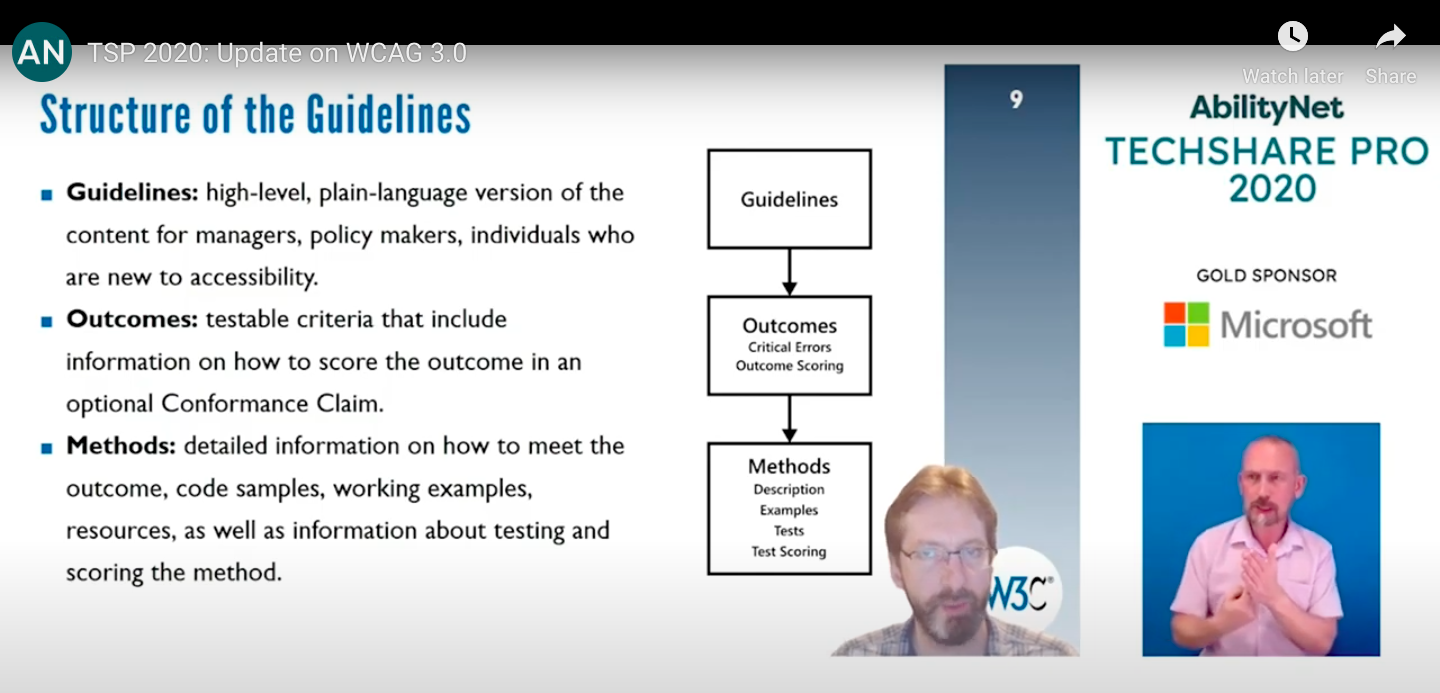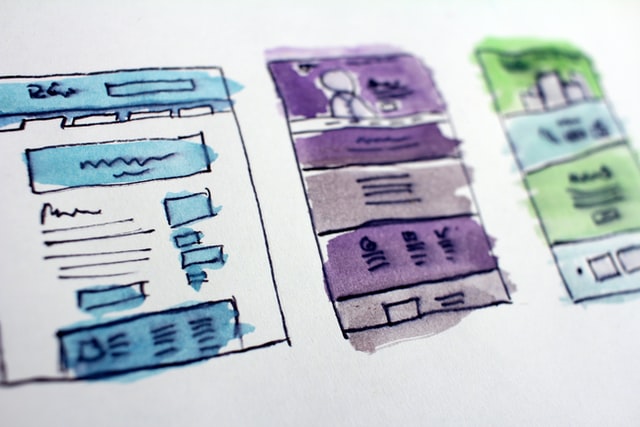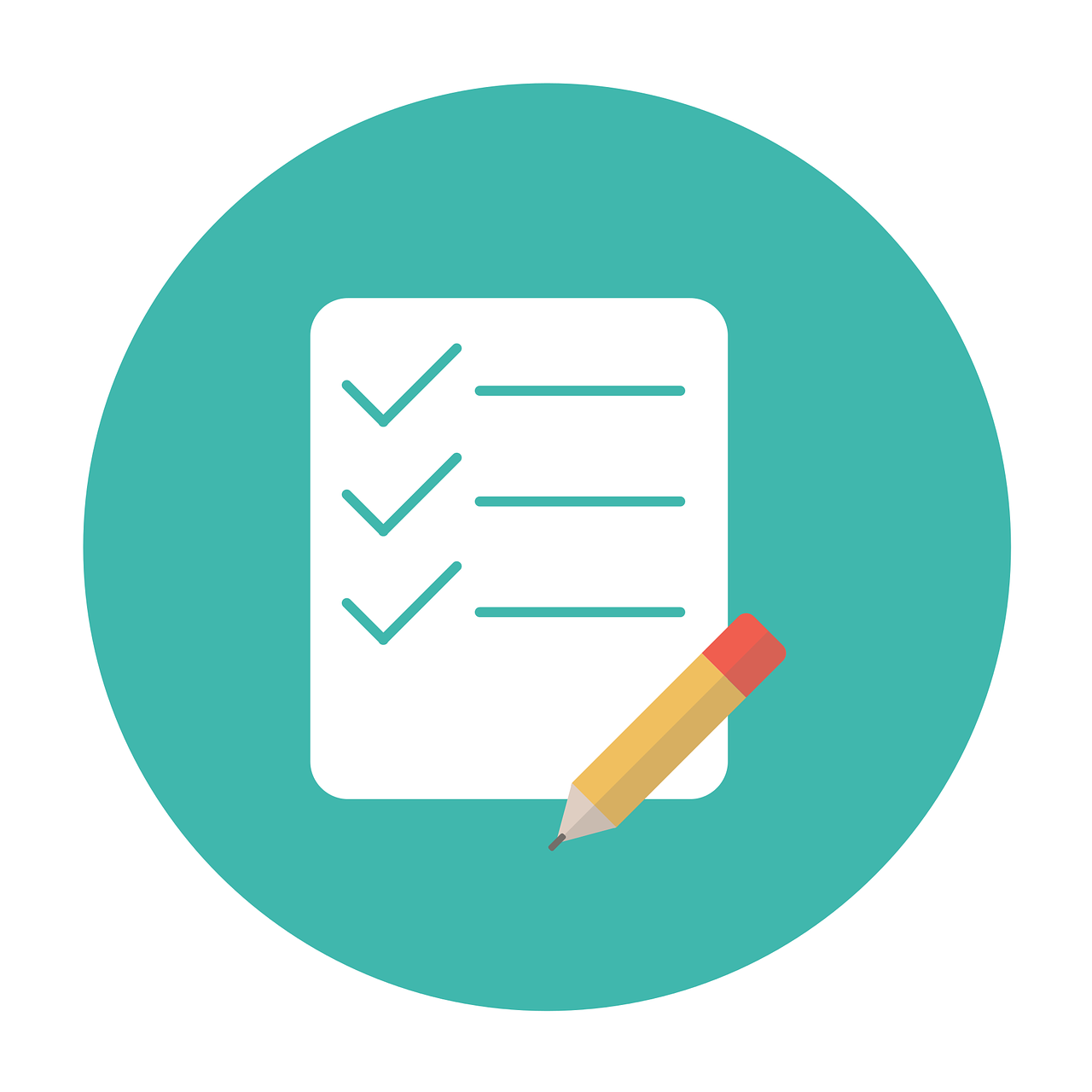What to expect from the WCAG 3.0 (Web Content Accessibility Guidelines)
First Published as part of European Accessibility Leadership Review, March 2020
Version 3.0 of the Web Content Accessibility Guidelines (WCAG) are due for publication but what can you expect and how will they differ from WCAG 2.0? This Q&A is based on a presentation by Nomensa’s Alastair Campbell, who is co-chair of the Accessibility Guidelines Working Group W3C.
Campbell delivered the presentation as part of TechShare Pro 2020.
Key questions answered in this document are:
- What is WCAG 3.0?
- What are the guiding principles behind WCAG 3.0?
- What are the main differences between WCAG 3.0, and WCAG 2.0?
- What has silver got to do with WCAG 3.0?
- When will the WCAG 3.0 guidelines be published?
- What are some of the goals for WCAG 3.0?
- How will WCAG 3.0 meet the goals set out by W3C?
- How will the WCAG 3.0 guidelines look different?
- What is an example of how a WCAG 3.0 guideline will work?
- How will testing work under WCAG 3.0?
- What are the Holistic tests described in WCAG 3.0?
- Can I use WCAG 3.0 without testing my site?
- Top 3 Takeaways
What is WCAG 3.0?
WCAG 3.0 is a new set of accessibility guidelines from the W3C.
What are the guiding principles behind WCAG 3.0?
The aims are to provide more flexibility, for the guidelines to be easier to use, and for a conformance model that better reflects the experience of people with disabilities.
What are the main differences between WCAG 3.0, and WCAG 2.0?
Version 3.0 maintains the WCAG acronym, but there's a lot changing under the surface. For example, WCAG 3.0 isn’t intended to be backwards compatible. It now stands for W3C accessibility guidelines rather than web content. The reference to content has been dropped, which is a subtle indicator of the increased scope of the guidelines.
People may have heard of it referenced as silver and that name is still around.
What has silver got to do with WCAG 3.0?
Silver is the name for the project, and the taskforce that created the guidelines. The silver taskforce has several subgroups that are working on specific items, such as guidelines or the conformance model. There’s a community group, which has been an important method of expanding participation beyond those who can join the W3C.
When will the WCAG 3.0 guidelines be published?
The likely publication will be sometime in 2023.
What are some of the goals for WCAG 3.0?
Some of the goals of WCAG 3.0 include:
• A desire to address a broader range of user needs
• Accommodating new technologies such as Virtual Reality (VR) and Augmented Reality (AR)
• More clearly-defined testing procedures
• Multiple approaches to testing; not just a true false statement.
• Inclusion of more frequent updates to the standard
• A more process-orientated approach to compliance
• Easier to understand guidelines.
• A research-driven approach to any guideline updates
How will WCAG 3.0 meet the goals set out by W3C?
WCAG 3.0 aims to meet these goals by changing the structure of the guidelines, and the conformance model, and by updating the content of the guidelines. The requirements from the previous guidelines won’t radically change because they're good and necessary things to do, but they will be expressed differently.
How will the WCAG 3.0 guidelines look different?
A guideline under WCAG 3.0 is what is currently defined as a ‘success criteria’. Underneath these guidelines are outcomes. An outcome is a testable criteria, which includes information on how to score the outcome. It won’t necessarily be a true or false statement of the type used in WCAG 2.0.
Beneath outcomes sit ‘methods’, which include detailed information on how to meet each outcome. A method could be example code, working samples, resources, or information about testing.

What is an example of how a WCAG 3.0 guideline will work?
 Let's use text alternatives because it's available in the WCAG 2.0 and the first draft of WCAG 3.0. The guideline is to “provide text alternative for non-text content”. The outcome for that sounds more like the current success criteria.
Let's use text alternatives because it's available in the WCAG 2.0 and the first draft of WCAG 3.0. The guideline is to “provide text alternative for non-text content”. The outcome for that sounds more like the current success criteria.
A text alternative for non-text content needs to be available for use by agents and assistive technologies, which allows users who are unable to perceive and or understand the non-text content to determine its meaning.
It's separate from the content and it could be achieved by the author, the authoring tool, or even the user agent.
The methods underneath the outcomes are usually a list of technology, specific ways of meeting the outcome and therefore the guidelines. Looking at a method for text alternatives it has an introduction, description, examples, tests and resources.
Each of these is presented as a tab on a web page.
Guidelines will also include ‘how to’ information offering more guidance than those in WCAG 3.0.
How will testing work under WCAG 3.0?
 WCAG 3.0 includes atomic and holistic tests; atomic tests look at specific subsets of websites, or specific criteria. Holistic test take more of an overall view. The first draft will focus on the atomic tests with holistic tests being introduced later.
WCAG 3.0 includes atomic and holistic tests; atomic tests look at specific subsets of websites, or specific criteria. Holistic test take more of an overall view. The first draft will focus on the atomic tests with holistic tests being introduced later.
Atomic tests are similar to or the build upon the sort of concepts previously used in WCAG 2.0. These are element level tests that can be consistently counted.
Some will result in a pass or fail condition and so will be assigned 100% or 0%.
Then there are tests that could apply to content without clear boundaries; how clear is the language included on a web page as an example.
That could have a rating scale.
What are the Holistic tests described in WCAG 3.0?
Holistic tests will include more usability orientated methods such as testing with assistive technology, user-centered design methods or expert usability testing.
Where you’re scoring you will be able to create an overall score.
Critical errors will lead to a zero score, aggregated from the atomic tests described above. However, if digital assets reach a benchmark (say 90% across each functional category) then websites can meet a base level of performance.
Functional categories are defined as aspects such as vision and visual language and literacy, and each guideline will be assigned to one or more functional categories.
Websites build up a score within each functional category.
Each functional category score will be normalized between zero and five as defined by a set of standardized spreadsheets. To achieve an overall conformance score, assets must have no critical errors and score at least 3.5 on average.
The new guidelines are more complex than finding a single issue and failing. They are intended to be a bit more nuanced.
Can I use WCAG 3.0 without testing my site?
Guidelines can still be used for good practice without scoring or without using the scoring.
For those who do wish to make a conformance claim the scope can be all the content of a digital product but more often it's going to be one or more subsets of the whole based on the processes and views.
Top 3 Takeaways
- WCAG 3.0 guidelines are likely to be published in 2023
- Less focus on pass fail and a more nuanced approach
- More emphasis on reflecting the needs of people with disabilities
First Published as part of European Accessibility Leadership Review, March 2020

